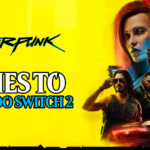Ever feel like you’re throwing spaghetti at the wall when it comes to social media? Posting without a plan, hoping something sticks? I get it! Social media can feel like a constant scramble for attention. But guess what? I stumbled upon something pretty cool that might just help us both get a grip.
I was browsing through Search Engine Journal (always a good source for the latest digital marketing goodies) and found this article: “Social Media Planner: How To Plan Your Content (With Template)” by Jason Hennessy.
Now, I know what you’re thinking: “Another planner? Really?” But hear me out! This isn’t just another generic template. It’s a framework for actually thinking about your social media strategy, scheduling your posts, and organizing your content in a way that makes sense.
Why is planning so crucial? Well, according to a recent study by HubSpot, marketers who proactively plan their campaigns are 397% more likely to report success. That’s a massive difference! It’s the difference between aimlessly wandering and strategically navigating to your destination.
The article provides a free template you can download and customize. This alone is worth the read. Think of it as your command center for social media domination.
Here are 5 key takeaways from the article that resonated with me:
- Consistency is King (and Queen!): A planner helps you maintain a consistent posting schedule. Remember, studies show that brands posting consistently see higher engagement rates. Don’t let your audience forget about you! Sprout Social found that brands that post multiple times per day see more than double the engagement of brands that only post once a day.
- Content Pillars are Your Foundation: The planner encourages you to define your core content pillars. These are the topics you’ll consistently cover, ensuring you’re always providing value to your audience. Buffer suggests focusing on 3-5 pillars to keep your content focused.
- Targeted Content Beats Random Posts: By planning ahead, you can tailor your content to specific audience segments. This is way more effective than just blasting out general messages. A survey by Mailchimp revealed that segmented campaigns have an average of 23% higher open rates.
- Track and Tweak: The template provides space to track your results, allowing you to see what’s working and what’s not. This data-driven approach is key to continuous improvement. Neil Patel advocates for constant testing and analysis of social media performance.
- Time is Money (and Sanity!): Let’s be honest, planning saves you a ton of time in the long run. No more last-minute scrambles to find something to post. Hootsuite reports that businesses that plan their social media save an average of 6 hours per week.
Honestly, taking control of your social media doesn’t have to be a headache. This free planner, inspired by Jason Hennessy’s article on Search Engine Journal, provides a solid starting point for anyone looking to level up their social game. Give it a try and see how it can transform your social media presence!
FAQ: Social Media Planning – Your Burning Questions Answered!
- Why do I even need a social media planner? Can’t I just post whenever I feel like it? While spontaneity can be fun, a planner helps you stay consistent, target your audience effectively, and ultimately achieve your social media goals. Think of it as a roadmap for your online presence.
- What should I include in my social media content calendar? Include the date and time of each post, the platform you’re posting to, the content of the post (text, image, video), any relevant links, and the target audience.
- How far in advance should I plan my social media content? Aim for at least a week in advance, but ideally a month. This gives you time to create high-quality content and schedule posts strategically.
- What are content pillars, and why are they important? Content pillars are the core themes or topics that define your brand and provide value to your audience. They help you stay focused and consistent in your messaging.
- How do I know what content to create for each platform? Research your audience on each platform to understand their interests and preferences. Tailor your content to suit the specific platform’s format and style.
- How often should I post on each social media platform? This depends on the platform and your audience. Research industry benchmarks for optimal posting frequency, and experiment to see what works best for you.
- How can I measure the success of my social media efforts? Track key metrics like engagement rate, reach, website traffic, and conversions. Use these insights to refine your strategy and improve your results.
- What tools can help me with social media planning and scheduling? There are tons of options! Some popular choices include Hootsuite, Buffer, Sprout Social, and Later.
- What if my planned content isn’t performing well? Don’t be afraid to adjust your strategy! Analyze the data to identify what’s not working, and experiment with different content formats, posting times, and messaging.
- How can I stay organized with my social media planning? Use a digital planner, spreadsheet, or project management tool to keep track of your content calendar, deadlines, and tasks.








